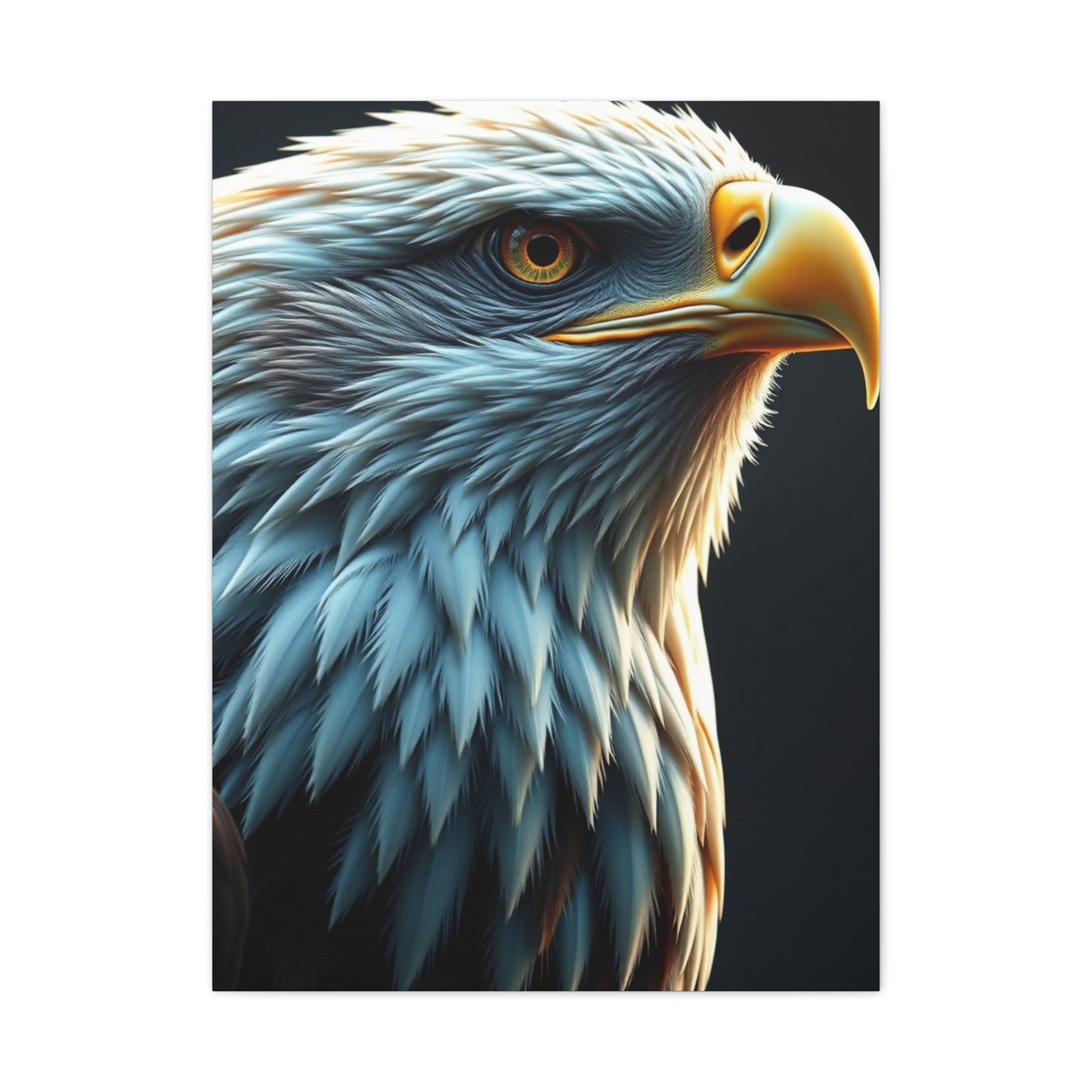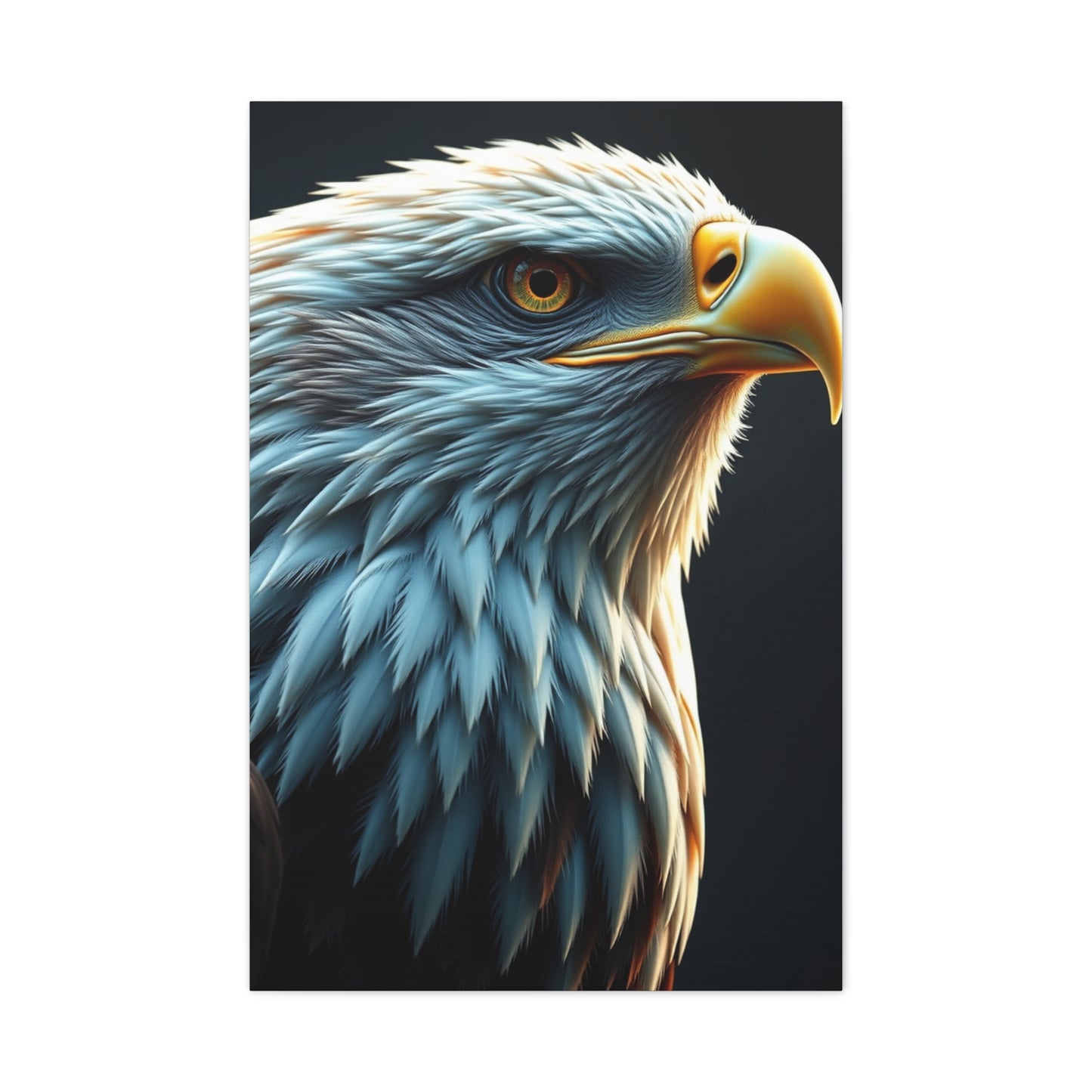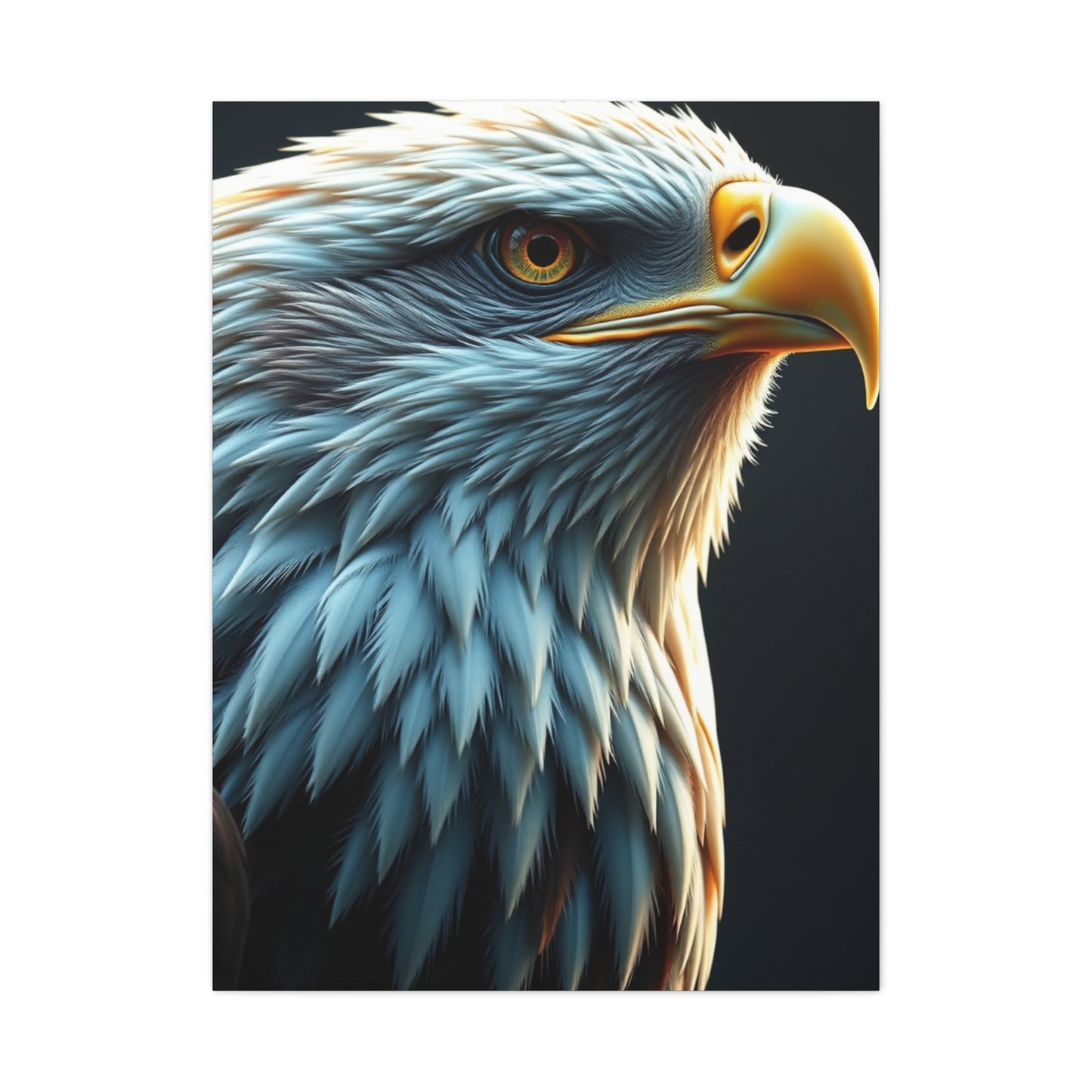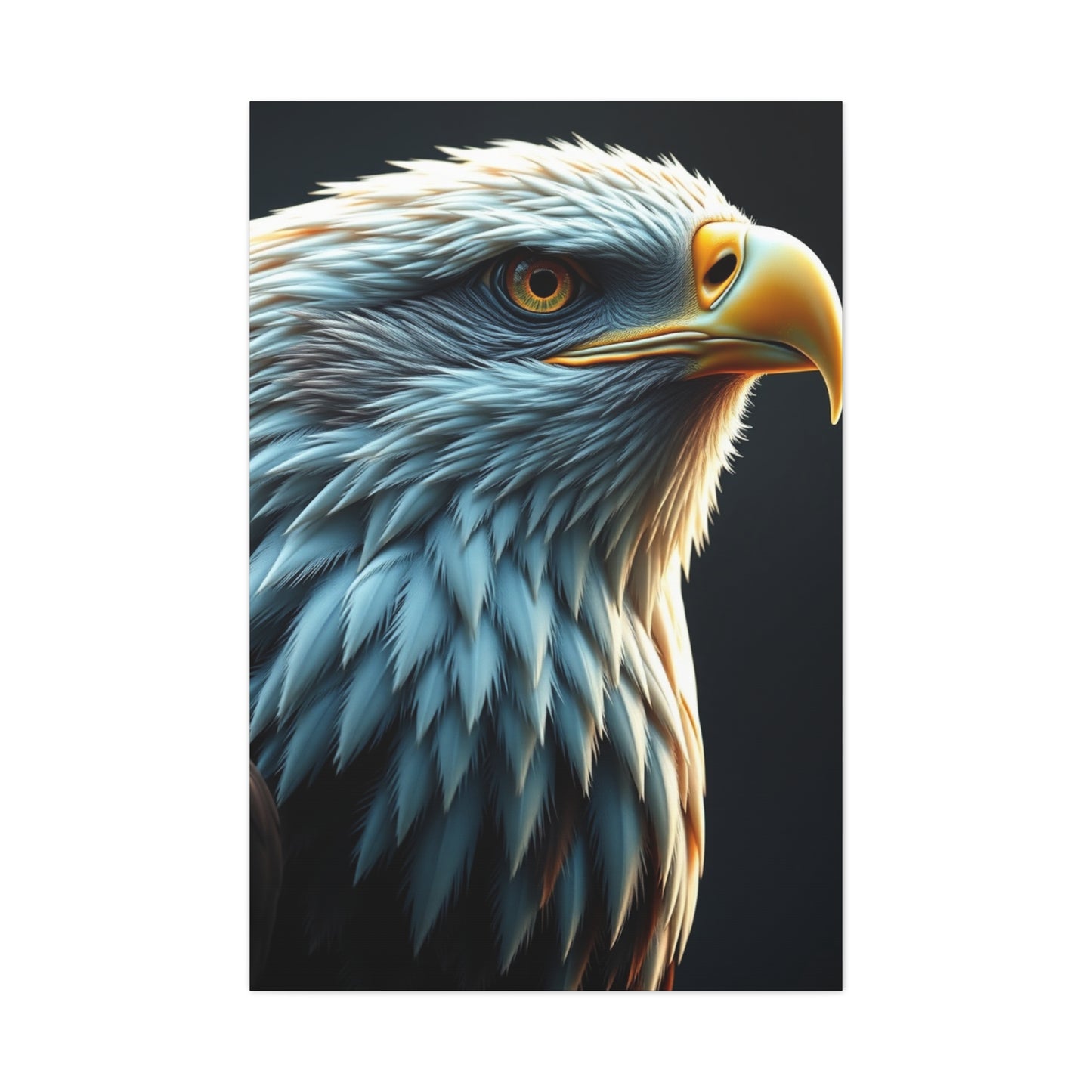Celestial Avian Panorama: The Ultimate Exploration of Sky-Dwelling Birds and Their Magnificent Realm
The celestial avian panorama represents one of nature's most breathtaking spectacles, where winged creatures paint the sky with their graceful movements and create living tapestries against the backdrop of clouds and atmosphere. This comprehensive exploration delves into the intricate world of birds that inhabit our skies, their behaviors, habitats, and the profound connection they share with the celestial realm above us. Understanding the celestial avian panorama requires us to look beyond simple birdwatching and embrace the full spectrum of avian life as it interacts with the heavens.
Understanding the Celestial Avian Panorama and Its Significance
The celestial avian panorama encompasses far more than the simple act of birds flying through the air. It represents a complex ecosystem suspended between earth and sky, where countless species have evolved remarkable adaptations to master the aerial domain. This panorama includes everything from the smallest hummingbirds that hover like jeweled helicopters to the mighty condors that soar on thermal currents for hours without flapping their wings. Every element of this celestial theater contributes to a greater understanding of how life has conquered the skies through millions of years of evolution.
When we observe the celestial avian panorama, we witness a dynamic system where birds navigate using sophisticated internal compasses, communicate through complex vocalizations, and perform aerial acrobatics that defy our understanding of physics. The sky becomes their stage, and their performances reveal secrets about survival, adaptation, and the delicate balance of ecosystems. From dawn choruses that herald each new day to the spectacular murmurations of starlings that twist and turn in synchronized perfection, the celestial avian panorama offers endless opportunities for wonder and scientific discovery.
The significance of studying this celestial realm extends into multiple disciplines including ecology, meteorology, conservation biology, and even aerospace engineering. Birds have taught humans countless lessons about flight dynamics, navigation, and efficient energy use. The celestial avian panorama serves as a barometer for environmental health, with bird populations reflecting changes in climate, habitat quality, and ecosystem stability. By understanding these aerial denizens, we gain insights into the broader health of our planet and the interconnected web of life that sustains all species.
The Evolutionary Journey of Birds into the Celestial Domain
The story of how birds came to dominate the celestial avian panorama begins over 150 million years ago when feathered dinosaurs first took to the skies. This evolutionary transition from terrestrial to aerial creatures represents one of the most significant adaptations in the history of life on Earth. The ancestors of modern birds gradually developed specialized features that would enable them to master the celestial realm, including hollow bones that reduced weight while maintaining strength, feathers that provided both insulation and aerodynamic surfaces, and powerful breast muscles capable of sustained flapping flight.
Throughout millennia, the celestial avian panorama has been shaped by natural selection favoring those individuals best adapted to life in the air. Different lineages evolved distinct strategies for aerial existence, leading to the incredible diversity we observe today. Some birds became specialists in powered flight, developing rapid wingbeats that allow them to maneuver through dense vegetation or hover in place while feeding on nectar. Others mastered the art of soaring, using their broad wings to catch rising air currents and travel vast distances with minimal energy expenditure.
The conquest of the celestial domain required numerous anatomical and physiological innovations. Birds developed an exceptionally efficient respiratory system featuring air sacs that allow for continuous airflow through the lungs, ensuring adequate oxygen supply during the demanding activity of flight. Their cardiovascular systems evolved to support high metabolic rates, with heart rates that can exceed 1,000 beats per minute in small species. The skeletal system transformed dramatically, with the fusion of bones in the hands and feet to create rigid structures suitable for flight, while the spine and ribcage became reinforced to withstand the stresses of aerial locomotion.
Vision became paramount in the celestial avian panorama, and birds evolved some of the most sophisticated visual systems in the animal kingdom. Many species possess tetrachromatic vision, allowing them to perceive ultraviolet wavelengths invisible to humans. This enhanced color perception helps birds identify ripe fruits, detect prey, and recognize potential mates based on plumage coloration. The placement of eyes on either side of the head in most species provides a wide field of view for detecting predators, while raptors have forward-facing eyes that grant the binocular vision necessary for judging distances when hunting.
The Physics and Mechanics of Avian Flight in the Celestial Realm
Understanding the celestial avian panorama requires a grasp of the fundamental physics that enable birds to defy gravity and navigate through three-dimensional space. Flight is achieved through a delicate balance of four forces: lift, weight, thrust, and drag. Birds generate lift primarily through the shape and movement of their wings, which function as airfoils. As air flows over the curved upper surface of the wing faster than the flatter lower surface, pressure differences create an upward force that counteracts the bird's weight.
The celestial avian panorama showcases multiple flight styles, each optimized for different ecological niches and behavioral needs. Flapping flight, the most energetically expensive form, involves continuous wing movement to generate both lift and thrust. Small birds like sparrows and finches employ rapid wingbeats in a figure-eight pattern, with each downstroke providing forward propulsion and upward lift. Larger birds often use a slower, more powerful stroke pattern, taking advantage of greater wing area to generate sufficient lift with fewer beats per second.
Soaring represents a more energy-efficient strategy visible throughout the celestial avian panorama, particularly among large birds like eagles, vultures, and albatrosses. These masters of the sky utilize rising air currents called thermals, which form when the sun heats the ground unevenly. Warm air rises in columns, and soaring birds circle within these thermals, gaining altitude without expending energy on flapping. Once they reach the top of a thermal, they glide forward and downward until encountering another rising column, creating a pattern of ascent and descent that allows them to cover enormous distances with minimal effort.
Gliding differs from soaring in that birds convert altitude into forward motion without relying on rising air. The celestial avian panorama includes specialized gliders like frigatebirds and shearwaters that have evolved high aspect ratio wings, meaning they are long and narrow. This wing shape minimizes drag while maximizing lift, allowing these birds to glide efficiently over vast oceanic expanses. Some species can glide for hours, using subtle adjustments of wing and tail feathers to maintain stability and control direction without a single flap.
Hovering represents one of the most challenging flight modes in the celestial avian panorama, requiring precise control and tremendous energy expenditure. Hummingbirds are the undisputed masters of this technique, capable of maintaining a fixed position in the air while feeding from flowers. They achieve this feat through a unique wing structure that allows rotation at the shoulder, enabling them to generate lift on both the downstroke and upstroke. Their wings move in a figure-eight pattern up to 80 times per second, creating a buzzing sound that gives these birds their common name.
Diversity of Species Contributing to the Celestial Avian Panorama
The celestial avian panorama encompasses approximately 10,000 bird species distributed across every continent and in virtually every habitat type. This remarkable diversity reflects the success of the avian body plan and the countless evolutionary pathways birds have followed to exploit aerial resources. From the frozen Antarctic where penguins have abandoned flight to become aquatic specialists, to tropical rainforests where colorful parrots and toucans add vibrant splashes against green canopies, birds have adapted to survive and thrive in nearly every environment on Earth.
Raptors or birds of prey constitute a prominent component of the celestial avian panorama, with their predatory lifestyle requiring exceptional visual acuity and flight performance. Eagles, hawks, falcons, and owls have evolved specialized adaptations for hunting from the air. Peregrine falcons achieve diving speeds exceeding 240 miles per hour during their hunting stoops, making them the fastest animals on the planet. Red-tailed hawks soar on broad wings, scanning the ground below for rodents and rabbits, while diminutive American kestrels hover on rapidly beating wings before dropping onto insect prey.
Waterfowl add another dimension to the celestial avian panorama, with ducks, geese, and swans undertaking some of the most impressive migratory journeys in the animal kingdom. These birds possess streamlined bodies, webbed feet for swimming, and powerful flight muscles that enable them to fly thousands of miles between breeding and wintering grounds. Bar-headed geese famously migrate over the Himalayas, reaching altitudes above 20,000 feet where oxygen levels would incapacitate most other creatures. Their specialized hemoglobin allows them to extract oxygen efficiently from the thin mountain air, enabling these extraordinary high-altitude crossings.
Seabirds represent highly specialized components of the celestial avian panorama, having evolved numerous adaptations for life at the interface of air and ocean. Albatrosses possess the longest wingspans of any living bird, with wandering albatrosses reaching nearly 12 feet from tip to tip. These remarkable birds use a technique called dynamic soaring, exploiting the difference in wind speed between the wave troughs and the air above to travel vast distances across open ocean with minimal energy expenditure. Some albatrosses fly hundreds of thousands of miles annually, returning to remote islands only to breed.
Passerines or perching birds make up more than half of all bird species and form a critical component of the celestial avian panorama in virtually every terrestrial habitat. This diverse group includes everything from tiny wrens and warblers to large ravens and lyrebirds. Many passerines are renowned for their vocal abilities, with complex songs used to defend territories and attract mates. The celestial avian panorama comes alive each spring with dawn choruses as male songbirds proclaim their presence, creating natural symphonies that have inspired humans throughout history.
Migration Patterns and Navigation in the Celestial Avian Panorama
Among the most awe-inspiring aspects of the celestial avian panorama are the epic migrations undertaken by billions of birds each year. These journeys connect distant ecosystems and demonstrate the remarkable navigational capabilities evolution has instilled in avian species. Migration allows birds to exploit seasonal resources, breeding in high latitudes during the productive summer months before retreating to more hospitable climates for the winter. This strategy enables birds to access abundant food supplies while avoiding the harsh conditions and resource scarcity of winter at high latitudes.
The celestial avian panorama witnesses migrations ranging from short altitudinal movements to transcontinental odysseys spanning thousands of miles. Arctic terns hold the record for the longest migration, traveling from Arctic breeding grounds to Antarctic waters and back each year, covering approximately 44,000 miles annually. These remarkable birds experience two summers per year, taking advantage of peak productivity in polar regions while avoiding winter darkness and ice. Their journey takes them across vast stretches of open ocean, demonstrating extraordinary endurance and navigational precision.
Navigation during these celestial journeys involves multiple sensory systems working in concert. Birds possess an internal magnetic compass that detects the Earth's magnetic field, allowing them to determine direction even when visual cues are absent. Specialized cells containing magnetite crystals in their beaks or special photoreceptors in their eyes sensitive to magnetic fields enable this remarkable ability. The celestial avian panorama serves as a navigation aid itself, with many birds using the position of the sun during the day and star patterns at night to orient themselves and maintain proper heading.
Landmarks play crucial roles in navigation, particularly as migrating birds near their destinations. The celestial avian panorama shifts as birds descend from high-altitude migration flights to locate familiar coastlines, mountain ranges, and river systems that guide them to specific breeding or wintering sites. Many species demonstrate remarkable site fidelity, returning to the same nesting areas year after year, sometimes to within meters of previous nest sites. This precision requires not only excellent navigation but also accurate spatial memory of landscape features.
The timing of migration within the celestial avian panorama is controlled by circannual rhythms, internal biological clocks that respond to environmental cues like changing day length. As days shorten in autumn, hormonal changes trigger migratory restlessness, compelling birds to begin their journeys. The celestial avian panorama transforms dramatically during peak migration periods, with radar studies revealing massive movements of birds traveling under cover of darkness. Millions of individuals may pass over a single location in a single night, creating invisible rivers of avian life flowing through the atmosphere.
Feeding Strategies and Foraging Behavior in the Sky
The celestial avian panorama provides countless opportunities for birds to obtain food, with different species exploiting various aerial resources. Insectivores like swallows and swifts spend much of their lives on the wing, capturing flying insects with remarkable agility. These aerial hunters have evolved wide gapes surrounded by bristles that function like nets, increasing the chances of successful prey capture during high-speed pursuits. The celestial avian panorama swarms with insects during summer months, providing abundant food for these specialized predators and their rapidly growing offspring.
Nectarivores add brilliant colors to the celestial avian panorama as they move from flower to flower in search of sugary rewards. Hummingbirds possess long, specialized bills and extendable tongues with fringed tips that lap up nectar through capillary action. Their high-energy lifestyle requires them to visit hundreds or thousands of flowers daily to meet their metabolic needs. The relationship between flowering plants and nectarivorous birds represents a coevolutionary partnership, with flowers providing food while birds provide pollination services essential for plant reproduction.
Raptors contribute dramatic predation scenes to the celestial avian panorama, hunting everything from insects to large mammals. Different raptor species employ varied hunting strategies suited to their morphology and preferred prey. Accipiters like sharp-shinned hawks have short, rounded wings and long tails perfect for maneuvering through dense forest vegetation in pursuit of small birds. Buteos such as red-tailed hawks soar on broad wings while scanning open habitats for rodents below. Falcons use speed and aerial agility to capture prey in flight, performing spectacular aerial chases that showcase the ultimate limits of avian performance.
Scavenging represents another important feeding strategy visible in the celestial avian panorama, with vultures playing crucial ecological roles by disposing of carrion. These large birds soar for hours on thermal currents, using their exceptional vision to scan vast areas for carcasses. Once a food source is located, vultures may travel dozens of miles to reach it, and their arrival often attracts other scavengers in a cascade effect. The celestial avian panorama includes spectacular scenes of dozens of vultures circling above feeding sites, their presence cleaning up remains that might otherwise spread disease.
Communication and Social Behavior Among Aerial Species
The celestial avian panorama resonates with vocalizations as birds communicate through songs and calls that serve various functions. Birdsong represents one of the most complex forms of acoustic communication in the animal kingdom, with some species producing learned repertoires containing hundreds of distinct song types. Male songbirds typically sing to advertise territory ownership and attract mates, with song quality often indicating the singer's health and genetic quality. The dawn chorus transforms the celestial avian panorama each morning as territorial males proclaim their presence in a coordinated vocal display.
Visual displays add another dimension to communication in the celestial avian panorama, with many species using flight patterns, plumage displays, and body postures to convey information. Courtship flights can be elaborate, with males performing aerial acrobatics to impress potential mates. Woodcocks execute impressive aerial displays at dusk, spiraling upward while producing twittering sounds with their wings, then plummeting back to earth while vocalizing. These performances broadcast male quality and play crucial roles in mate selection.
The celestial avian panorama includes remarkable examples of cooperative behavior, with some species forming large flocks that provide benefits including enhanced predator detection, improved foraging efficiency, and reduced individual risk of predation. Starling murmurations represent perhaps the most visually stunning example of avian cooperation, with thousands or tens of thousands of birds wheeling through the sky in synchronized formations that shift and flow like living smoke. Each bird maintains proper spacing from its neighbors by responding to the movements of the six or seven closest individuals, creating emergent patterns of extraordinary complexity.
Mobbing behavior adds aggressive interactions to the celestial avian panorama when small birds collectively harass potential predators. When a hawk or owl is discovered during daylight hours, smaller birds may gather and approach the predator closely, calling loudly and sometimes making direct contact. This mobbing serves multiple functions including alerting other birds to danger, teaching offspring to recognize predators, and potentially driving the threat away from the area. The celestial avian panorama may include scenes of dozens of birds from multiple species cooperating to harass a single predator.
Nesting and Reproductive Strategies in Elevated Habitats
The celestial avian panorama extends to nesting sites where birds raise their young, with different species employing varied reproductive strategies. Cliff-nesting species like peregrine falcons and swallows construct nests on vertical rock faces, taking advantage of locations that are inaccessible to most terrestrial predators. The celestial position of these nests provides excellent visibility for detecting approaching threats while offering convenient access to aerial hunting grounds. Cliff swallows build elaborate mud nests in colonies that may contain hundreds or thousands of pairs, creating apartment-style complexes on cliff faces and under bridges.
Tree-cavity nesters occupy an important niche within the celestial avian panorama, using hollow trees created by decay or excavated by woodpeckers. Species like chickadees, nuthatches, and bluebirds depend on these cavities for nesting, and competition for suitable sites can be intense. The cavities provide protection from weather and predators, creating relatively safe environments for raising young. Many cavity-nesting species have evolved specific adaptations including the ability to cling to vertical surfaces and defend cavity entrances from competitors.
Platform nesters like eagles and ospreys construct massive stick structures that may be used for decades and grow to weigh several tons. These prominent nests become landmarks in the celestial avian panorama, visible from great distances and often situated in large trees or on artificial structures like power line towers. Eagles may renovate and add to their nests each breeding season, creating structures of impressive size that represent years or decades of accumulated material. The elevated position provides excellent visibility while keeping eggs and young safe from most ground predators.
Ground-nesting species face greater challenges from predators but remain an important component of the celestial avian panorama. Shorebirds like plovers and terns nest on beaches and sandbars, creating simple scrapes in the substrate with minimal nesting material. These exposed nests rely on cryptic egg coloration and parental distraction displays to avoid predation. When predators approach, adults may perform elaborate broken-wing displays, appearing injured to lure threats away from eggs or chicks. The vulnerability of ground nests makes these species particularly susceptible to human disturbance and habitat loss.
Brood parasitism represents an unusual reproductive strategy employed by some species in the celestial avian panorama. Cowbirds and cuckoos lay their eggs in the nests of other species, leaving host parents to raise their offspring. This strategy relieves parasitic species from the energetic costs of parental care but imposes significant costs on host species. Cowbird chicks often outcompete host offspring for food, sometimes leading to complete breeding failure for the host parents. This reproductive strategy has evolved independently in several bird lineages and represents a fascinating example of evolutionary arms races between parasites and hosts.
Adaptations to Different Atmospheric Conditions
The celestial avian panorama includes birds that have evolved remarkable adaptations to function across a wide range of atmospheric conditions. High-altitude specialists like bar-headed geese possess enhanced oxygen-carrying capacity in their blood, allowing them to fly over the world's highest mountains where oxygen levels are only a fraction of those at sea level. Their hemoglobin has a higher affinity for oxygen than that of lowland species, enabling them to extract adequate oxygen from thin mountain air. These adaptations allow birds to access resources and migration routes unavailable to less specialized species.
Temperature regulation presents significant challenges for birds in the celestial avian panorama, particularly during flight when metabolic heat production increases dramatically. Small birds with high surface area to volume ratios lose heat rapidly and must maintain high metabolic rates to stay warm. Counter-current heat exchangers in the legs allow birds to conserve body heat by warming cold arterial blood with heat from returning venous blood. This adaptation prevents excessive heat loss through the feet while allowing birds to stand on ice or snow without freezing.
Desert species in the celestial avian panorama have evolved numerous adaptations to cope with extreme heat and water scarcity. Many desert birds are active primarily during cooler morning and evening hours, reducing their exposure to midday heat. Behavioral adaptations like gular fluttering, rapid vibration of the throat region, increases evaporative cooling without the water loss associated with panting. Some desert species can tolerate body temperatures that would be fatal to other birds, allowing them to remain active when temperatures soar above 100 degrees Fahrenheit.
Birds that inhabit the celestial avian panorama over oceans face the challenge of drinking seawater without succumbing to salt poisoning. Seabirds possess specialized salt glands located above the eyes that extract excess salt from the bloodstream and excrete it as a concentrated solution. This adaptation allows albatrosses, petrels, and other oceanic species to drink seawater and feed on marine prey without accumulating dangerous salt levels. The salt solution drips from the bill, allowing these birds to maintain proper salt balance while spending months at sea without access to fresh water.
Seasonal Changes in the Celestial Avian Panorama
The celestial avian panorama transforms dramatically with the seasons, reflecting changes in bird populations, behaviors, and ecological interactions. Spring brings an explosion of activity as migrants return from wintering grounds and resident species begin breeding. The aerial arena fills with courtship displays, territorial conflicts, and the construction of nests. Male birds establish territories through song and aggressive displays, creating an acoustic landscape that peaks during dawn and continues throughout the day. The celestial avian panorama becomes a theater of romance as males compete for mates and females evaluate potential partners.
Summer represents the breeding season for most species in temperate regions, transforming the celestial avian panorama into a nursery teeming with activity. Parent birds make countless trips between nests and feeding areas, gathering food for rapidly growing young. The demands of provisioning nestlings push adult birds to their physiological limits, with some species delivering food to the nest hundreds of times daily. Fledglings take their first flights, adding awkward but determined efforts to the aerial landscape as they master the skills necessary for independent survival.
Autumn brings a second period of intense activity to the celestial avian panorama as billions of birds undertake migratory journeys. The aerial environment becomes crowded with migrants moving toward wintering grounds, often traveling at night to take advantage of cooler temperatures and calmer winds. Staging areas along migration routes may host hundreds of thousands of birds simultaneously as individuals refuel before continuing their journeys. The composition of the celestial avian panorama shifts dramatically as summer residents depart and winter visitors arrive, creating turnover in species composition.
Winter transforms the celestial avian panorama into a landscape of survival where food scarcity and harsh weather challenge resident birds. Many species form mixed-species foraging flocks, benefiting from increased predator detection and enhanced foraging efficiency. Some birds cache food during autumn, creating thousands of hidden food stores they relocate during winter using remarkable spatial memory. Others undergo physiological changes including increased fat storage and enhanced insulation through additional down feathers. The celestial avian panorama may seem quiet and empty compared to other seasons, but close observation reveals remarkable stories of survival and adaptation.
The Role of Weather Systems in Shaping Avian Movements
Weather patterns profoundly influence the celestial avian panorama, affecting both daily activities and large-scale movements. Wind represents one of the most significant factors, with birds often delaying migration or altering flight paths to take advantage of tailwinds or avoid headwinds. Migrating birds show sophisticated responses to weather systems, timing departures to coincide with favorable conditions that reduce energy costs and increase travel speed. Following winds can allow migrants to double or triple their ground speed, dramatically reducing the time and energy required to reach distant destinations.
Storm systems create dramatic disturbances in the celestial avian panorama, forcing birds to seek shelter or alter their flight paths. Severe weather may ground migrants, leading to spectacular fallouts where thousands of exhausted birds descend to rest and refuel. Coastal areas often experience these fallouts when storms over water force migrating birds to land at the first available habitat. Birdwatchers eagerly await these events, which can bring rare species far outside their normal ranges and concentrate massive numbers of birds in small areas.
Atmospheric pressure changes provide important cues for birds navigating the celestial avian panorama. Many species can detect subtle pressure variations associated with approaching weather systems, allowing them to anticipate and respond to changing conditions. Birds may delay migration when low-pressure systems approach, waiting for the passage of fronts and the clearing skies that often follow. These abilities allow birds to minimize exposure to dangerous flying conditions and optimize the timing of major movements.
Precipitation affects the celestial avian panorama by limiting visibility and increasing the energy costs of flight. Rain adds weight to feathers and disrupts the smooth airflow over wing surfaces, reducing aerodynamic efficiency. Most birds avoid flying in heavy rain when possible, though some species continue limited activity even in poor conditions. Snow presents additional challenges, covering food sources and forcing birds to expend extra energy for thermoregulation. The celestial avian panorama may appear almost empty during severe winter storms as birds hunker down in sheltered locations.
Temperature inversions create unique conditions in the celestial avian panorama, trapping pollutants and affecting sound transmission. These atmospheric conditions occur when warm air overlies cool air, preventing vertical mixing. Birds flying during inversions may encounter reduced visibility and altered acoustic environments. Temperature inversions can also affect the formation and strength of thermals, influencing the ability of soaring birds to gain altitude and travel efficiently.
Predator-Prey Relationships in the Aerial Environment
The celestial avian panorama includes complex predator-prey interactions as birds both hunt and are hunted within the three-dimensional aerial arena. Aerial predation requires exceptional speed, agility, and visual acuity, with predatory birds evolving numerous specializations for capturing prey on the wing. Peregrine falcons execute spectacular high-speed stoops, diving from above to strike prey with their talons while traveling at speeds that would be lethal if they struck solid objects. The impact often kills prey instantly, and the falcon catches the falling victim before it reaches the ground.
Prey species have evolved numerous anti-predator adaptations visible in the celestial avian panorama. Flocking represents one of the most effective defenses, with groups providing many eyes for predator detection and creating confusion that makes it difficult for predators to focus on single targets. The complex aerial maneuvers of starling murmurations likely evolved partially as a predator defense strategy, with the coordinated movements making it extremely difficult for hawks or falcons to isolate and capture individuals. Flock members benefit from the dilution effect, where each individual's risk of predation decreases as group size increases.
Cryptic coloration and behavior help some species avoid detection by predators patrolling the celestial avian panorama. Many birds possess plumage patterns that blend with their typical backgrounds, making them difficult to spot against foliage, bark, or earth. Nightjars and potoos take this strategy to extremes, remaining motionless on branches where their plumage makes them virtually indistinguishable from bark. This camouflage only fails when the birds flush from their perches, briefly revealing themselves as they take flight.
Alarm calls play crucial roles in predator-prey dynamics within the celestial avian panorama. Many species produce specific vocalizations when they detect predators, alerting other birds to danger. These calls may contain information about predator type and location, allowing listeners to take appropriate evasive action. Interestingly, alarm calls often show acoustic properties that make them difficult for predators to localize, allowing callers to warn others without revealing their own positions. This sophisticated communication system benefits entire bird communities and even crosses species boundaries.
Some prey species engage in direct confrontation with predators through mobbing behavior that can temporarily disrupt hunting activities within the celestial avian panorama. When predators like owls or hawks are discovered, smaller birds may harass them persistently, following them closely and sometimes making physical contact. This mobbing can be costly for predators, interfering with hunting and potentially attracting additional attention from other predators or humans. The behavior seems to provide learning opportunities for young birds, teaching them to recognize and respond appropriately to threats.
Habitat Requirements and Ecosystem Connections
The celestial avian panorama depends critically on diverse habitats that provide the resources birds need for survival and reproduction. Different species require specific habitat features including appropriate vegetation structure, food availability, water sources, and nesting sites. Forest-dwelling birds may need particular tree species or forest ages, while grassland species require expanses of appropriate grass height and density. The three-dimensional structure of vegetation influences which species can occupy a given area, with different birds foraging at different heights from ground level to the forest canopy.
Wetlands support exceptional diversity within the celestial avian panorama, providing habitat for waterfowl, wading birds, and numerous other species. These productive ecosystems generate abundant insect life, aquatic vegetation, and fish that support complex food webs. Marshes, swamps, and riparian areas serve as critical stopover sites for migrants, offering food and rest opportunities during long journeys. The loss of wetland habitats has contributed to declines in many bird populations, highlighting the importance of protecting these valuable ecosystems.
Edge habitats where different vegetation types meet often support high bird diversity in the celestial avian panorama. These transitional zones provide access to resources from multiple habitat types and may offer increased structural complexity compared to habitat interiors. However, edges can also create ecological traps where increased predation or parasitism reduces reproductive success. Understanding how birds use edge habitats helps inform conservation strategies and landscape management decisions.
Snags and dead trees provide essential resources for many components of the celestial avian panorama despite their lack of foliage. Cavity-nesting birds depend on dead trees for nest sites, while insectivorous species glean bark-dwelling invertebrates from weathered wood. Woodpeckers excavate nest cavities and hunt wood-boring insects in dead trees, creating resources that benefit numerous other species. The removal of dead trees from managed forests has contributed to declines in cavity-nesting bird populations, leading to efforts to retain snags in forested landscapes.
Human Interactions with the Celestial Avian Panorama
Human activities profoundly affect the celestial avian panorama through habitat alteration, pollution, climate change, and direct exploitation. Urbanization transforms natural landscapes into built environments that some bird species can exploit while excluding many others. Urban areas support communities dominated by generalist species like pigeons, house sparrows, and starlings that thrive in human-modified environments. However, cities also eliminate habitat for numerous specialist species that require specific environmental conditions unavailable in urban settings.
Agricultural expansion has dramatically altered the celestial avian panorama across vast areas, replacing diverse natural habitats with monocultures that support reduced bird diversity. Intensive agriculture often eliminates hedgerows, field borders, and wetlands that provide critical habitat for birds. Pesticide use reduces insect abundance, removing food sources for insectivorous birds and potentially poisoning birds that consume contaminated prey. Some agricultural landscapes do support significant bird populations, particularly when farming practices incorporate conservation measures like leaving stubble fields over winter or maintaining field margins with native vegetation.
Birdwatching represents a positive interaction between humans and the celestial avian panorama, with millions of people finding joy and meaning in observing wild birds. This activity generates economic benefits through equipment sales, tourism, and related industries while fostering environmental awareness and conservation support. Birdwatchers contribute valuable data through citizen science programs that track bird populations and distributions, providing information crucial for conservation planning. The popularity of birdwatching demonstrates the cultural and aesthetic values people derive from maintaining healthy bird populations.
Window strikes kill hundreds of millions of birds annually in North America alone, representing a major but largely preventable source of mortality affecting the celestial avian panorama. Birds collide with windows when they perceive reflections as continuous habitat or when they attempt to reach vegetation or sky visible through transparent glass. Solutions include applying visual markers to glass, installing screens or netting, and using specially designed glass with patterns visible to birds. Reducing light pollution at night also helps by preventing nocturnal migrants from becoming disoriented by artificial lights.
Conservation efforts aim to protect and restore the celestial avian panorama through habitat preservation, species management, and policy interventions. Protected areas including national parks, wildlife refuges, and private reserves safeguard critical habitats from development. International agreements like the Migratory Bird Treaty Act provide legal protection for bird species crossing national boundaries. Conservation organizations work to address threats through land acquisition, restoration projects, and advocacy for bird-friendly policies. These efforts have achieved notable successes including the recovery of species once threatened with extinction.
Technological Advances in Studying the Celestial Avian Panorama
Modern technology has revolutionized our ability to study the celestial avian panorama, providing insights impossible to obtain through traditional observation methods alone. Radar systems originally developed for detecting aircraft have been adapted to track bird movements, revealing migration patterns and quantifying the magnitude of nocturnal movements invisible to human observers. Weather surveillance radar networks now routinely document bird migration across entire continents, showing how billions of individuals respond to weather systems and navigate toward distant destinations.
Satellite telemetry allows researchers to track individual birds throughout their annual cycles, documenting previously unknown movements and habitat use patterns. Tiny devices attached to birds transmit signals to orbiting satellites, providing location data with remarkable precision. These studies have revealed extraordinary journeys including trans-oceanic crossings, high-altitude mountain passages, and complex stopover strategies. The data collected inform conservation efforts by identifying critical habitats throughout each species' range and highlighting threats that may affect populations far from breeding areas.
Automated recording units placed in habitats capture vocalizations continuously, allowing researchers to document changes in the celestial avian panorama over time. These acoustic monitoring systems record songs and calls from dawn to dusk and throughout the night, generating massive datasets that reveal patterns in species presence, breeding activity, and community composition. Machine learning algorithms can automatically identify species from their vocalizations, enabling analysis of thousands of hours of recordings that would be impossible for humans to review manually.
High-speed cameras and video analysis have unveiled details of bird flight mechanics invisible to the unaided eye. Slow-motion footage reveals subtle wing adjustments and control surfaces that birds use to maneuver through complex environments. Wind tunnel studies with trained birds flying on treadmills allow precise measurements of aerodynamic forces and energy expenditure under controlled conditions. These investigations advance our understanding of flight mechanics while inspiring improvements in aircraft design and micro-drone technology.
Genetic analysis provides powerful tools for understanding population structure, evolutionary history, and relationships among species in the celestial avian panorama. DNA sequencing reveals connectivity between populations, identifying distinct groups that may require separate conservation management. Genetic studies have resolved long-standing taxonomic uncertainties and revealed cryptic species that appear identical but represent evolutionarily distinct lineages. This information helps prioritize conservation resources by identifying populations with unique genetic characteristics deserving special protection.
Final Thoughts:
As we conclude our journey through the Celestial Avian Panorama, it becomes evident that this captivating artwork does more than just depict birds in flight; it invites us to explore the vast, boundless sky that they call home. The delicate interplay between sky and bird in this panoramic depiction captures the essence of freedom, grace, and the awe-inspiring beauty of the natural world. It’s an art form that transcends mere decoration and delves into the symbolism of flight, the expansiveness of the heavens, and the mysteries of the world above us.
One of the most striking elements of the Celestial Avian Panorama is the way it evokes a sense of wonder and vastness. The open sky, vast and infinite, stretches out in every direction, while the birds—whether soaring high above mountains, gliding gracefully through clouds, or perched on distant branches—embody the freedom and fluidity that we all long for in our own lives. There’s something deeply moving about the portrayal of birds in flight: their effortless movement across the sky is a reminder of the beauty of nature’s rhythms and the limitless possibilities that await those who dare to dream.
What makes the Celestial Avian Panorama so powerful is its ability to capture not just the physical form of birds, but also the intangible qualities they represent—freedom, transcendence, and the connection between the earth and the heavens. Birds are ancient symbols of liberation, often associated with spiritual ascension, hope, and new beginnings. By placing these majestic creatures in their celestial realm, this artwork invites the viewer to contemplate their own journey, to think about their place in the world, and to embrace the infinite potential that lies beyond the horizon.
This panoramic art form offers a unique way to transform any space into a sanctuary of serenity and introspection. Whether hung above a mantel, on a long wall, or as a centerpiece in a spacious living room, the Celestial Avian Panorama draws the eye upward, creating a sense of elevation and expansiveness. It’s a perfect choice for modern, minimalist, or nature-inspired interiors, as it blends seamlessly into rooms filled with light and airy elements. The vast expanse of the sky and the grace of the birds create a harmonious focal point that adds depth and tranquility to any room.
Beyond its aesthetic appeal, the Celestial Avian Panorama also resonates on a deeper level, sparking reflection about the natural world and our connection to it. The image of birds soaring through the sky serves as a metaphor for human aspirations—to break free from constraints, to rise above challenges, and to soar toward new possibilities. It reminds us that, like the birds, we too have the ability to navigate the vast, open skies of our own lives, finding beauty and meaning in every journey we take.
The art also invites us to reconnect with the majesty of nature, whether we live in the heart of a bustling city or a quiet rural retreat. The Celestial Avian Panorama brings the great outdoors indoors, offering a glimpse of the infinite sky and the creatures that inhabit it. It reminds us of the peaceful rhythms of nature, the ever-changing sky, and the birds that flit and glide with effortless grace, drawing us into their magnificent world.
In conclusion, the Celestial Avian Panorama is much more than just wall art—it’s a celebration of nature’s beauty, a reflection on the themes of freedom and transcendence, and a powerful reminder of our own potential. By bringing the realm of sky-dwelling birds into our living spaces, this artwork transforms the environment, creating a sense of peace, possibility, and connection to something greater. It’s a piece that invites us to dream, to reach for the sky, and to appreciate the magnificent realm of birds that so effortlessly glide through the heavens.



































